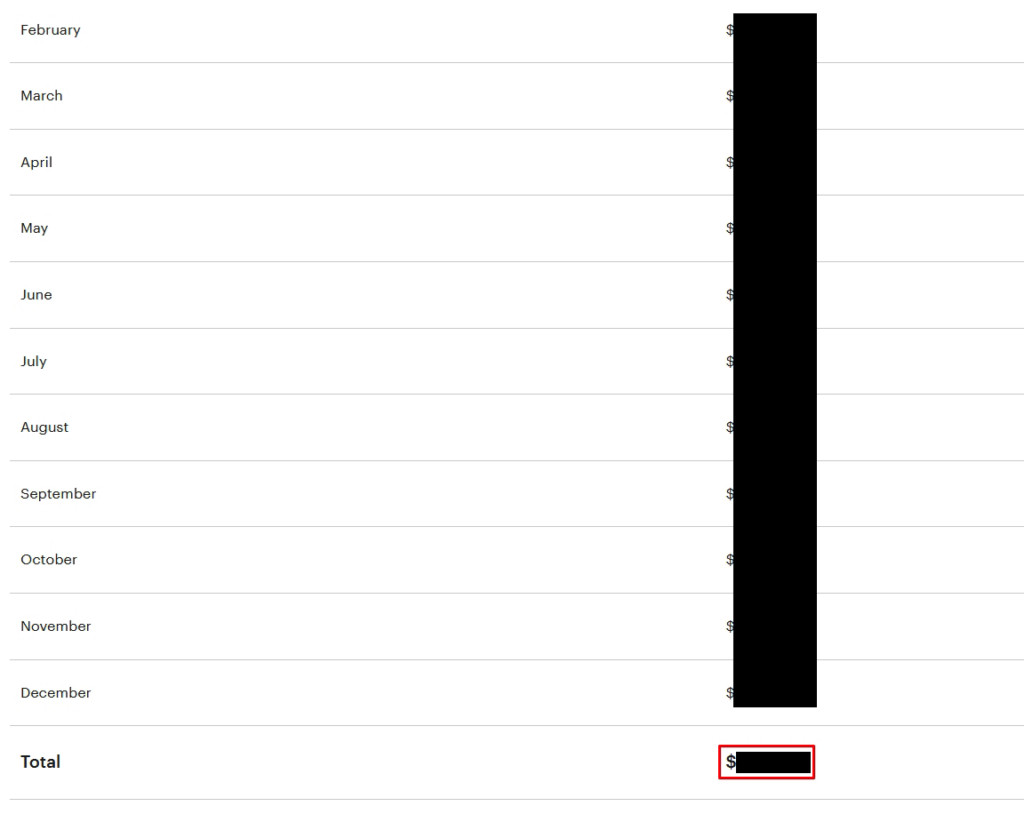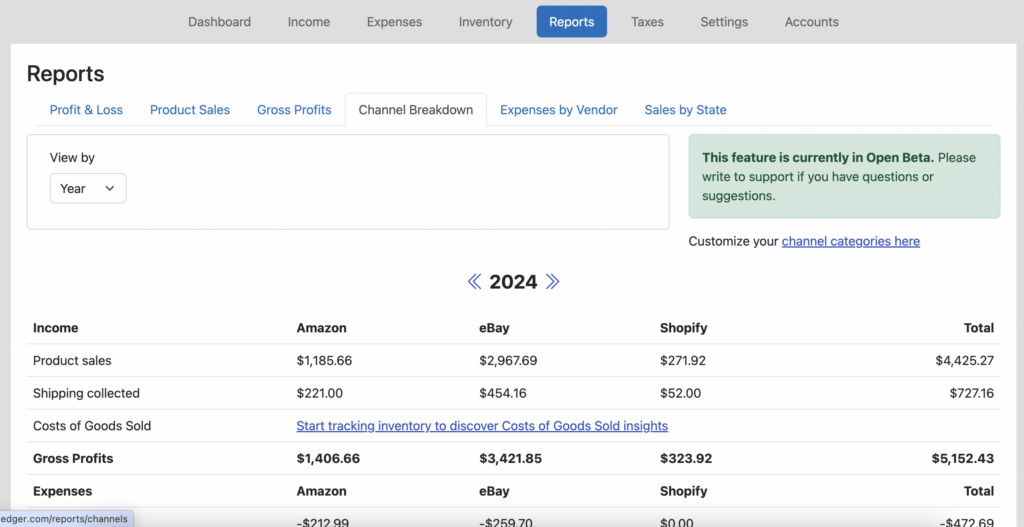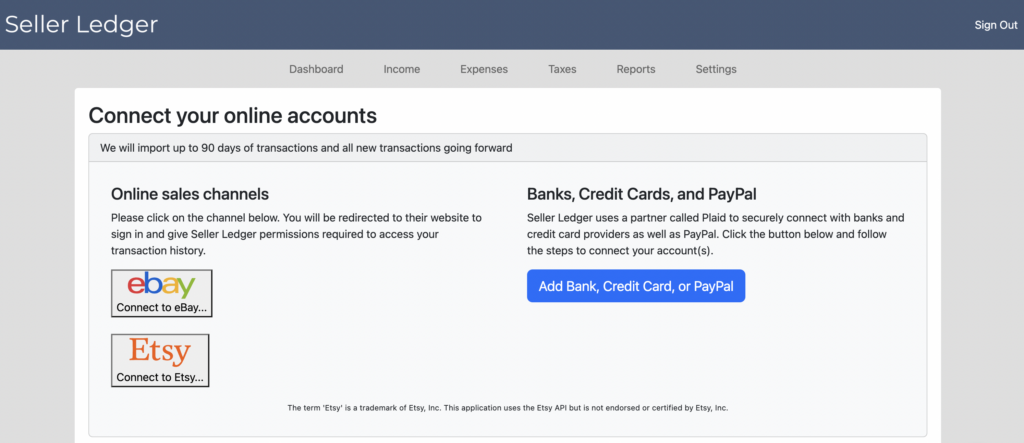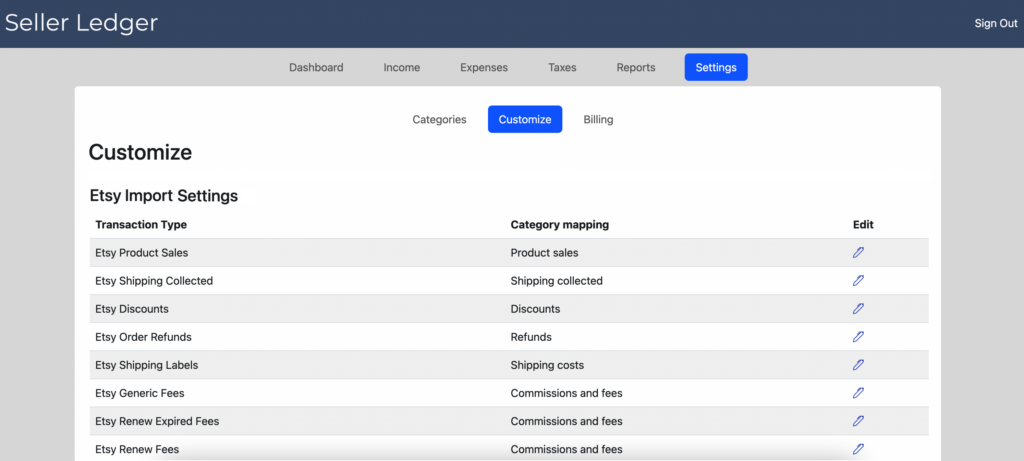Etsy 1099-K doesn’t match!
“While reviewing our tax and sales information in the Etsy dashboard, I noticed a significant discrepancy between Etsy’s reported numbers and Seller Ledger’s figures regarding total sales and income.”
Thus began a recent email exchange with a customer. And because we take accuracy rather seriously here at Seller Ledger, we dug right in immediately. Fortunately, the customer attached a screenshot of what Etsy was showing (numbers hidden for privacy.)

For those want to follow along, you can find this same information by going to:
Etsy > Finances > Legal & Tax Info > Select Tax Year
How does this compare to Seller Ledger’s data?
In order to compare directly, I pulled up this customer’s account, went to the Profit and Loss report, set the year to 2024, selected view by month, and set the channel filter to “Etsy”. This allowed me to see just the Etsy income and expense by month for the year.
And do you know what? The customer was correct. Etsy was showing different totals that Seller Ledger was. The question became, why? Was Seller Ledger wrong?
It was time to find out.
I copied the top “Income” section of the Seller Ledger profit and loss report into a spreadsheet. I then added a new row for the numbers provided in that Etsy tax screen. Lastly, I calculated the difference between the Etsy number for each month and the Total Income amount.
That’s when I noticed an interesting pattern. The numbers matched precisely in 7 of the 12 months of the year. And in the months where they didn’t match, the difference was EXACTLY the same as the “Refund” amounts shown in Seller Ledger for that month.
So Seller Ledger got the numbers exactly right. But how could the numbers be different?
In short, what is happening is that Etsy’s totals are not being reduced by order refunds. And this is a common occurrence with 1099-Ks across payment platforms, as we’ve previously written about. In fact, you can browse Etsy’s help article on the subject, and find some interesting language:
“Gross sales” may include but are not limited to:
- All of your sales
- Shipping
- Refunds
- Card processing fees
- Sales tax applied using the sales tax tool
- Canceled orders
May include? That doesn’t sound very definitive. But perhaps the most confusing is language around “refunds being included”.
The customer shared that someone from Etsy customer support had stated that refunds were included in the totals. But does that mean they have been reduced by the amount of the refunds? Or are they saying that the original sales (that eventually get refunded) are included in the total, but not the actual refund? In this instance, it was the latter.
After a bit more research, we found that Etsy actually does spell this out in more detail – you just have to find the right support article:
Your gross sales is the total amount your buyers have paid you, for the entire year, without subtracting expenses, such as:
- Fees
- Refunds
- Shipping costs
In general, we have found that platforms, when reporting Gross Sales, include all of the original sales, whether they get refunded or not, and do not subtract out the refunds when they happen.
Lessons learned
For me, there a few interesting learnings here:
- No matter how much the IRS and eCommerce platforms try to explain what goes into 1099-K numbers, any time you see different numbers in different places, it causes concern.
- Regardless of what you may read or be told about how numbers are calculated, there is simply no substitute for verifying them yourself. Math is your friend if you know how to use it.
- The best thing you can do to be prepared for any questions around numbers is to have a detailed accounting or bookkeeping solution that allows you to drill down on any totals to the underlying transactions and their components. This is exactly what Seller Ledger does, and why it took mere moments to figure out what was going on in this case.
I also want to give a shout out to the customer who worked with us on this case (you know who you are:), for being patient and sharing where they got the original source data so that we could share this experience and learning with others.



